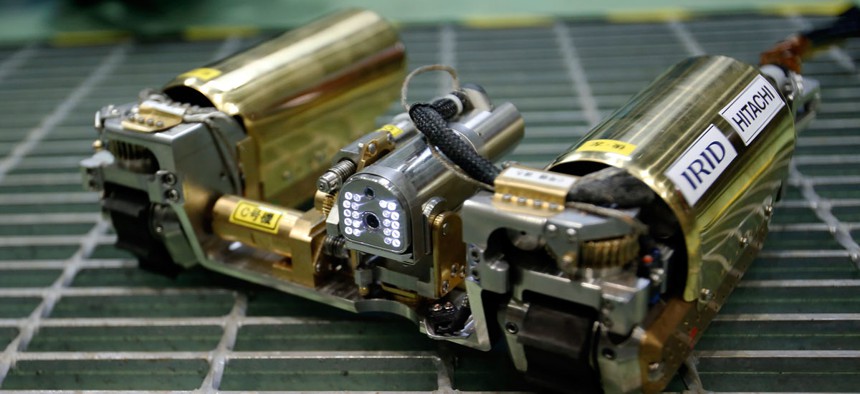Two Shape-Shifting Robots Now Stranded for Eternity Inside Fukushima’s Radioactive Ruins

A robot that looks like an enlarged fiberscope is controlled during a demonstration for the media at a government facility in Hitachi, Ibaraki Prefecture, northeast of Tokyo. Shizuo Kambayashi/AP
The robots were sent into the Fukushima No. 1 nuclear reactor to assess the damage.
Four years after an earthquake and tsunami destroyed Japan’s Fukushima nuclear plant, Tokyo Electric Power Co. is still at work trying to clean up the scene. This month TEPCO sent two specially-designed shape-shifting robots into the Fukushima No. 1 nuclear reactor to assess the damage.
The first of the unnamed snake-like 60 cm (24 in) robots—which use wheels to roll along in a “C” shape and convert to an “I” shape to shimmy through pipes—got stuck after moving about 10 meters (pdf) into the reactor’s ruins on April 10, and was abandoned. The second robot, which took a different route yesterday, completed its mission, but was also abandoned after it suffered damage to its camera from the high radiation levels.

Even if the robots hadn’t been damaged, a Pixar-style “WALL-E” ending was never in the cards: As IEEE Spectrum notes, the robots became so radioactive that they would have been permanently stored in a shielded box if they had returned from their missions.
Before their demise, the robots—designed by the International Research Institute for Nuclear Decommissioning and Hitachi-GE Nuclear Energy—measured radiation levels of 5.9 sieverts an hour. By comparison, brief exposure to levels of 10 sieverts per hour would cause death within a few weeks for humans.
The anonymous snakebots may be done for, but there is still a vast robot menagerie working on the Fukushima cleanup—including Quince, Packbot, Raccoon, and Rosemary.



